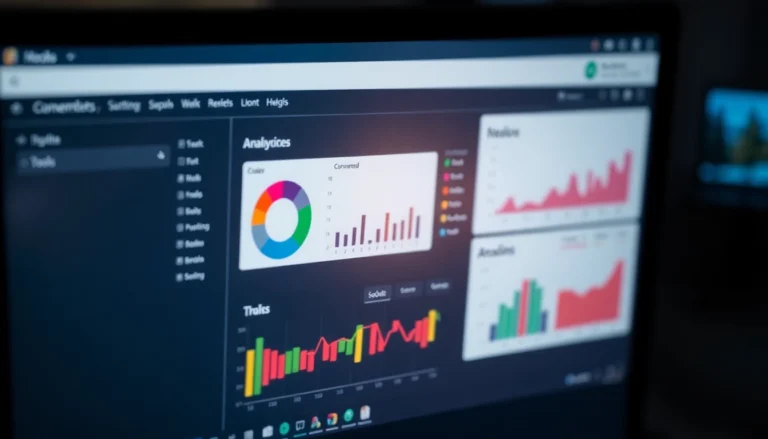
Comprehensive Guide to Blockchain and NFT Technology: Unlocking New Horizons in Digital Assets
Introduction to Blockchain and NFT Fundamentals
The rapid evolution of digital assets has positioned blockchain and non-fungible tokens (NFTs) at the forefront of financial innovation. As markets experience fluctuations—recently characterized by mixed stock performances and record-breaking gold prices—the underlying technological framework behind these assets becomes increasingly vital for investors seeking diversification and security. Understanding Blockchain and NFT Technology Guide offers invaluable insights into how these digital tools are transforming investment strategies, enhancing transaction transparency, and fostering new revenue streams.
Blockchain technology, at its core, is a distributed ledger system that ensures secure, immutable record-keeping across multiple nodes. Its decentralized nature mitigates single points of failure and enhances trustworthiness—a feature critically important in volatile markets such as equities, commodities, and cryptocurrencies. Simultaneously, NFTs—unique digital assets tied to blockchain—have unlocked new avenues for ownership rights, intellectual property, and digital collectibles, increasing their appeal to a broad spectrum of investors and creators alike.
Developing a Robust Strategy for Blockchain and NFT Investments
Assessing Market Trends and Identifying Promising NFTs
Building a successful investment portfolio in blockchain and NFTs begins with thorough market analysis. Monitoring trending sectors, such as digital art, gaming, or virtual real estate, helps investors highlight promising assets. For example, during recent market surges, NFTs associated with prominent artists or brands saw exponential growth, emphasizing the importance of trend tracking and due diligence.
Key indicators include trading volume, rarity and uniqueness factors, community engagement, and platform credibility. Upcoming projects with active development teams, transparent provenance, and real-world utility tend to demonstrate resilience amid market volatility.
Risks and Challenges Commonly Faced in Blockchain Asset Trading
Despite the lucrative opportunities, blockchain and NFT investments pose notable risks. Market volatility remains high owing to regulatory uncertainty, speculative behavior, and technological vulnerabilities. There’s also the threat of scams, counterfeit NFTs, and security breaches—necessitating stringent security measures.
To mitigate these risks, investors should diversify holdings, verify asset authenticity through reputable marketplaces, and employ multi-factor authentication. Keeping abreast of legal developments and industry standards is essential to navigate the complex landscape effectively.
Best Practices for Securing Digital Assets and Ensuring Authenticity
Security measures such as hardware wallets, cold storage, and encrypted private keys are crucial for safeguarding digital assets. Additionally, conducting cross-platform verification, utilizing blockchain explorers, and engaging with verified communities help ensure authenticity.
Educating oneself about common scams—like phishing attacks and fake NFT listings—and adopting best security protocols can significantly reduce exposure to cyber threats.
Technical Aspects and Platforms for Blockchain and NFTs
Leading Blockchain Protocols Supporting NFTs
Several blockchain protocols underpin the NFT ecosystem, each offering distinct features. Ethereum remains the dominant platform, with its ERC-721 and ERC-1155 standards facilitating the creation, transfer, and authenticity verification of NFTs. Other platforms such as Solana, Binance Smart Chain, and Tezos are gaining popularity due to lower transaction fees and faster confirmation times. For example, Solana’s scalability and cost-efficiency make it attractive for high-volume NFT marketplaces.
NFT Marketplaces and How to Choose the Right Platform
Choosing the right marketplace depends on factors like user base, asset support, fee structures, and security reputation. Popular platforms include OpenSea, Rarible, Mintable, and Foundation. Conducting thorough research about platform policies, community engagement, and liquidity ensures alignment with investment goals.
Integrating Blockchain Technology into Your Investment Workflow
Seamless integration involves choosing compatible wallets (MetaMask, Trust Wallet), employing blockchain explorers for transaction tracking, and establishing secure custody solutions. Automation tools and analytics platforms can provide real-time performance insights, enabling investors to optimize their holdings and react swiftly to market shifts.
Regulatory Landscape and Future Outlook
Legal Considerations and Compliance Requirements
The regulatory environment around blockchain and NFTs continues to evolve, with jurisdictions implementing varying standards. Key considerations include intellectual property rights, anti-money laundering (AML) compliance, tax obligations, and consumer protection laws. For instance, some countries classify NFTs as digital assets subject to capital gains tax, urging investors to maintain accurate records.
Emerging Trends and Future Developments in Blockchain and NFTs
Innovations such as decentralized finance (DeFi) integrations, cross-chain interoperability, and programmable NFTs spanning multiple platforms are poised to revolutionize the digital asset landscape. Additionally, institutions are exploring tokenization of physical assets, including real estate and commodities, which could unlock broader market participation.
Positioning Yourself for Long-Term Growth Amid Market Volatility
Successful positioning involves diversifying investment types, staying informed about technological advancements, and participating in community governance. Long-term investors are advised to focus on assets with utility, strong provenance, and strategic partnerships that foster resilience in turbulent markets.
Implementing and Monitoring Your Blockchain & NFT Strategy
Step-by-Step Guide to Start Investing in NFTs and Blockchain Assets
- Educate yourself using authoritative resources like the Blockchain and NFT Technology Guide.
- Create secure digital wallets supported by reputable platforms.
- Select trustworthy NFT marketplaces aligned with your investment focus.
- Conduct thorough research on assets, including provenance and community reputation.
- Begin with small investments to gauge market behavior and refine your strategy.
Performance Metrics to Track Success and Adjust Strategies
Regularly review metrics such as asset appreciation, trading volume, market liquidity, community activity, and platform security. Incorporate performance analytics tools to identify trends, capitalize on emerging opportunities, and mitigate risks proactively.
Case Studies: Successful Blockchain and NFT Investment Strategies
Notable examples include early investors in high-profile NFT collections like CryptoPunks or Bored Ape Yacht Club, which achieved significant returns due to strategic timing and verification. Additionally, projects like Decentraland demonstrate long-term potential through continued development and utility in virtual worlds.




